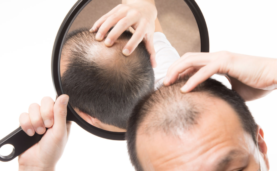 * Will you be bald like your father? If you pull a cane, seven come to your funeral? Is it better to wash your hair without shampooing? Does cutting the ends make the mane grow faster?
* Will you be bald like your father? If you pull a cane, seven come to your funeral? Is it better to wash your hair without shampooing? Does cutting the ends make the mane grow faster?
* There are thousands of doubts that exist and many others the myths with which popular wisdom tries to answer them.
We have asked the best experts in hair care and hair loss. They help us to clarify and dismantle false myths.
We started a series of questions and answers about hair, explained with a scientific basis.
The color of the hair is due to a pigment called melanin. Melanin is found in 2 different forms: eumelanin, which is the dark pigment that predominates in brown and brown hair, and pheomelanin, a slightly lighter pigment found in blonde and red hair. The different colors of hair are hereditary.
Approximately 50 to 100 hairs fall daily. A higher fall could be a problem and it would be advisable to consult a dermatologist.
Under physiological conditions, yes. The hair grows, rests and falls. Each day new hair grows on our head while others fall, according to a cycle that is renewed uninterruptedly. This cycle consists of different phases: the growth phase, the transition phase and the resting phase and subsequent fall. Each hair has its own cycle independently of the hair that surrounds it.
The duration of the capillary cycle varies depending on the age, the region of the body and the person. The hair of the scalp grows between 0.35 and 0.5 mm each day (approximately between 1-1.5 cm per month). It grows faster from 15 to 30 years old and grows faster in women.
Gray hair is a sign of aging. The age at which they begin to appear is given genetically. The graying is due to the decrease little by little of a pigment that is melanin. The sudden graying due to psychological causes has not yet been explained on a scientific basis. But it is not true that if we pluck a cane, more will appear!
Oily hair is due to an increase in the normal secretion of the sebaceous glands of the scalp. In some periods, such as puberty, there is greater sebaceous secretion due to hormonal causes. Also situations of stress can cause a greater secretion.
No. There is a popular belief, deeply rooted, that if you cut your hair, it “cleans” and then comes out stronger, but it’s not true.
A balanced healthy diet, with ingestion of vegetables, fruits, dairy products, fiber, fish, etc., will always be good for the whole organism.
The weight loss diet without medical control can cause an increase in normal hair loss and unfortunately is very common. It is very important in these cases that the doctor takes it into account and if necessary, consult the dermatologist.
It usually recovers after approximately 6 or 12 months, depending on each case; and even in some patients up to 24 months. It is convenient to consult the dermatologist, who can always help.
It is important to remember that starting in adolescence, both in men and women, there is a progressive decrease in the number of hairs on the scalp, as well as a progressive thinning of many of them. And that is normal. The problem happens when that decrease is intense enough to produce alopecia. Alopecias (abnormal hair loss) can be classified as: Non-scarring alopecia (androgenetic alopecia or common baldness and Alopecia areata) and cicatricial alopecia (lichen planus, fibrosing frontal alopecia, decalvating folicultis, .. among others).
It is the fall of the scalp influenced by the male sex hormones and in whose development plays an important role the genetic factors. It is an entity that, although it is much more frequent in males, also occurs in women. It is characterized by a miniaturization of the hair follicles and a reduction in the duration of the growth period or anagen, which translates into a substitution of terminal hairs for hair that can not be seen by the human eye and disappears over time. It affects both sexes, although with different manifestations between men and women.
The clinical data suggest that the age of presentation and the intensity of androgenetic alopecia respond to genetic tendencies.
Check your case our specialists of the Hair Dermatology Unit of HC Marbella will assess your case and tell you if you can benefit from any of the treatments available. There are many alternatives for alopecia. Do not give it up for lost!
Sources: Dra. Mota / Dr. Alcaide / Dra. Meyer.
Unidad de Dermatología Capilar HC Marbella.
February 25, 2019
Read other news
Tel.: +34 952 908 628
+34 609 148 799
952908898 Oncology
951829978 Diagnosis by imaging
951829947 Gynecology
952908897 Fertility
951829947 Physiotherapy